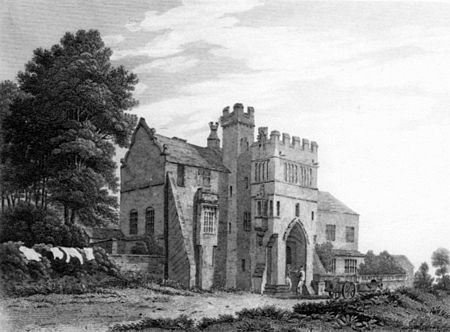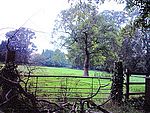Saighton Grange
Country houses in CheshireEnglish Gothic architecture in CheshireEngvarB from September 2013Gardens in CheshireGrade II listed buildings in Cheshire ... and 5 more
Grade I listed buildings in CheshireGrade I listed gatesHouses completed in 1861John Douglas buildingsReligious buildings and structures completed in 1490

Saighton Grange originated as a monastic grange. It was later converted into a country house and, as of 2013, the building is used as a school (Abbey Gate College). It is located in Saighton, Cheshire, England. The only surviving part of the monastic grange is the gatehouse, which is recorded in the National Heritage List for England as a designated Grade I listed building, and is one of only two surviving monastic manorial buildings in Cheshire, the other being Ince Manor. The rest of the building is listed at Grade II, as is its chapel.
Excerpt from the Wikipedia article Saighton Grange (License: CC BY-SA 3.0, Authors, Images).Saighton Grange
Chapel Lane,
Geographical coordinates (GPS) Address Phone number Website Nearby Places Show on map
Geographical coordinates (GPS)
| Latitude | Longitude |
|---|---|
| N 53.1503 ° | E -2.8342 ° |
Address
Abbey Gate College
Chapel Lane
CH3 6EN , Aldford and Saighton
England, United Kingdom
Open on Google Maps











